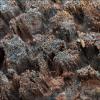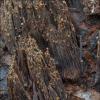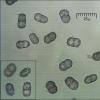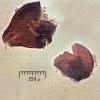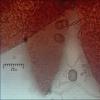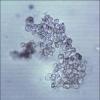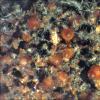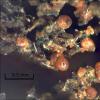
21-12-2025 09:32
Hello.A tiny ascomycete found embedded in wood in

21-12-2025 21:32
Pol DebaenstHello, Garden, Burgweg 19, Veurne, BelgiumOn 10/1

22-12-2025 23:38
Patrice TANCHAUDBonsoir, récolte sur un mur en pierre, apothéci

22-12-2025 00:47
Patrice TANCHAUDBonsoir, récolte à proximité du milieu dunaire

21-12-2025 21:40
Isabelle CharissouBonjour, j'aimerais connaitre les références de

20-12-2025 23:08
Patrice TANCHAUDBonsoir, récolte sur sol sablonneux dans l'arri�
 Hi to everyone,
Hi to everyone,I found this small (probably) asco on heavily decayed Polyporaceae (Phellinus punctatus and Inonotus nodulosus most common at this place) on fallen off, rotten branch of Fagus sylvatica. First I thought I found Nectria peziza (since on polypore). However, spores seem too big and too verrucose. Also perithecia seem pyriforme rather than globose and they apparently do not degrade to widely open 'peziza' type cups when old as I expected. Surprisingly I was unable to find asci? In the literature available to me I found no fit to this find.
Would appreciate if somebody could help me by instructing me where to look for further information or how to proceed to come up with an identification? Many thanks in advance.
Amadej Trnkoczy
__________________________________
Date of find: March 25. 2017
Place: Zadnjica valley west of Mt. Triglav, East Julian Alps, northwest Slovenia.
Habitat: alpine Fagus sylvatica forest with some Picea abies; in shade, rather cool and humid place; elevation 950 m, average temperature 5 -7 deg C, average precipitations ~ 3.000 mm/year, alpine phytogeographical region.
Spore dimensions: 14.3 [16.5 ; 17.6] 19.8 x 8.6 [10.2 ; 11] 12.6 microns; Q = 1.3 [1.6 ; 1.7] 1.9; N = 24; C = 95%; Me = 17 x 10.6 microns; Qe = 1.6.
I observed also much smaller, numerous (probably) conidia of some kind (Pic.: 8).
this could be Cosmospora coccinea/Nectria cosmariospora – a common species on old fruitbodies of Inonotus.
Best wishes,
Gernot
cheers

Thank you very much for your input. I browsed the information available on web for the name you proposed and it fits well to my observation. One question more: is it possible that my picture no.8 shows (micro?) conidia of anamorph form of the find - Verticillium olivaceum? Or they belong to something different? Reference Gräfenhan T, Schroers HJ, Nirenberg HI, Seifert KA, An overview of the taxonomy, phylogeny, and typification of nectriaceous fungi in Cosmospora, Acremonium, Fusarium, Stilbella, and Volutellastates (2011), Stud Mycol.; 68: 79-113. states: " ... Microconidia ellipsoidal, oblong or clavate or slightly allantoid, aseptate, in slimy heads... " but no dimensions are given. I was also unable to find some pictures of them.
Regards
Amadej
